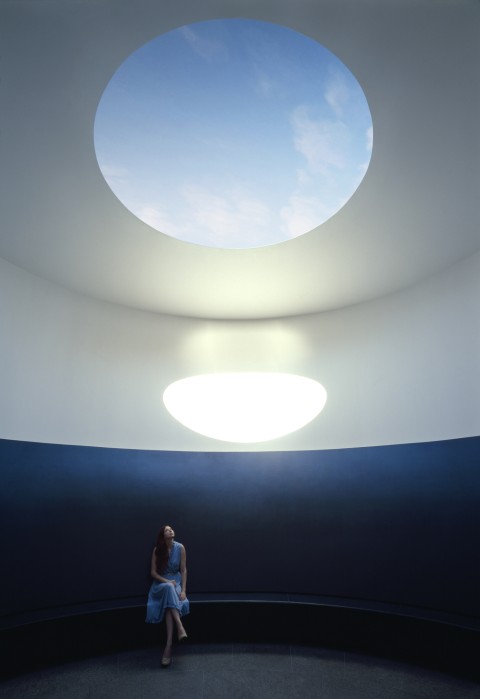
Research shows that looking at art is a proven technique for stress relief. Landmarks’ collection, including James Turrell’s Skyspace, The Color Inside, offers space for contemplation and opportunities for relaxation every day. Faculty across campus routinely use the collection to augment their curricula, but also tap into this powerful benefit.
Earlier this summer, we spoke with Dr. Rosa Schnyer, (DAOM, IFMCP, L.AC.) a doctor of Chinese medicine, functional clinician, and professor in the School of Nursing who uses Landmarks’ in her teaching and practice. In her seminar at UT Austin, “The Science of Mindfulness, the Art of Attention”, Dr. Schnyer focuses on actionable techniques to lower and manage stress. She spotlights the research behind mindfulness and wellness practices for her students, including the benefits of engaging with art.
“I really use the seminar as an excuse to give the students a pause and begin to develop skills for turning their attention inward,” said Dr. Schnyer. “From this inward attention, they can attend to what's happening outside themselves.”
Comprised of students in the Honors Program in the College of Natural Sciences, her undergraduates face a number of stressors, including preparing to take medical exams and keeping a high GPA. Dr. Schnyer’s awareness of how students struggle to manage stress informs the way she structures her class.
“For me, it’s about creating a container to just kind of let them decompress from everything else,” said Dr. Schnyer, “and to hopefully gain some insight into the way they manage stress and prioritize themselves.”
In the class, Dr. Schnyer goes into the science behind mindfulness and the origins of the meditative practice. Eventually she takes the curriculum outside of the classroom and integrates it into spaces across campus that are seemingly built for mindfulness practices.
“I'm really interested in the use of the Turrell Skyspace,” said Dr. Schnyer. “A lot of people know it for the light sequence and go to it for that, but there is this really incredible daytime usage. It’s ever present and like a cocoon. You can go in there and isolate and be quiet for five minutes and reset.”
While in the Skyspace, Dr. Schnyer leads her class through a group-based mindfulness session, which includes prompts for her students to contemplate and physical exercises they can do to de-stress and connect with the surrounding world. She asks, “Can we pause for, you know, a three-mindful-breath break and just reset and realize that we are not isolated from the natural environment, and see how our creative productivity can interface with this connection?”
“To the extent that I can get them out of the classroom, I get them walking and paying attention to what's happening in their surroundings and invite them to not be on their phone or their headphones.”
Outside of these mindfulness sessions, other assignments in the class include keeping a journal, writing reflections, and being present with their fellow classmates. The assignments can take on creative twists. Writing projects can be adjusted to different formats, including having students draft a letter to themselves, to someone else, or even a blog post—anything that allows them to sit and reflect on their time in the class and the mindfulness exercises.
While not everyone can participate in Dr. Schnyer‘s class, we invite you to visit the Skyspace at the William C. Powers Jr. Student Activity Center, or any of the works in Landmarks collection, to reflect and decompress. We offer other wellness resources, including a virtual Skyspace meditation, annual sound bath experiences, and self-guided tours.
We leave you with this takeaway from Dr. Schnyer, “Being mindful is about being kinder to yourself and kinder in the world.”
Learning with Landmarks is a dedicated blog series highlighting the unique and innovative ways that students and other scholars use the collection.
Photo: James Turrell, The Color Inside, 2013. Photo by Florian Holzherr
